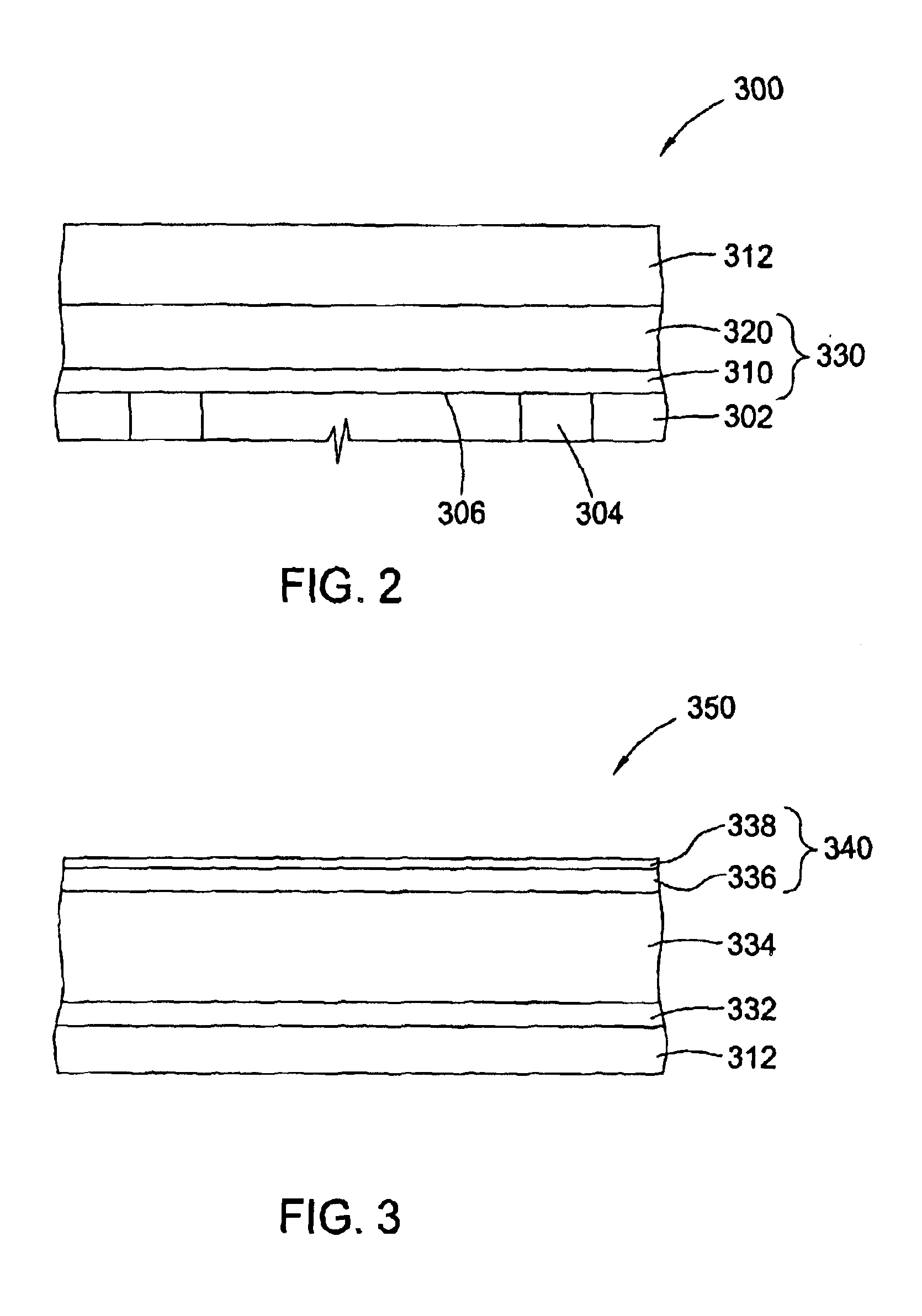Method for producing semiconductor including forming a layer containing at least silicon carbide and forming a second layer containing at least silicon oxygen carbide
a technology of silicon carbide and semiconductor, applied in the direction of coating, metallic material coating process, chemical vapor deposition coating, etc., can solve the problems of short-circuit device failure, silicon carbide barrier layer typically having undesirable characteristics, film instability, etc., to improve current leakage
- Summary
- Abstract
- Description
- Claims
- Application Information
AI Technical Summary
Benefits of technology
Problems solved by technology
Method used
Image
Examples
example 1
A silicon carbide glue layer was deposited at a chamber pressure of 5 Torr and temperature of 350° C. from gases which were flowed into a plasma processing chamber as follows:
trimethylsilane, at160 sccmethylene, at200 sccmhelium, at200 sccm
The substrate was positioned 400 mil from the gas distribution showerhead and 450 watts of high frequency power at 13.56 MHz was applied to the showerhead for plasma enhanced deposition of a silicon carbide silicon carbide glue layer. The silicon carbide glue layer was deposited at a rate of about 886 Å / min, and had a dielectric constant of about 3.73, a uniformity of about 2.5%, a leakage current of about 2.32×10−9 A / cm2 at 1 MV / cm, a leakage current of about 3.06×10−8 A / cm2 at 2 MV / cm, and a breakdown voltage of about 4.47 MV / cm.
example 2
A silicon carbide glue layer was deposited at a chamber pressure of 3 Torr and temperature of 350° C. from gases which were flowed into a plasma processing chamber as follows:
trimethylsilane, at150 sccmethylene, at 200 sccm.
The substrate was positioned 400 mil from the gas distribution showerhead and 600 watts of high frequency power at 13.56 MHz was applied to the showerhead for plasma enhanced deposition of a silicon carbide silicon carbide glue layer. The silicon carbide glue layer was deposited at a rate of about 1255 Å / min, and had a dielectric constant of about 3.81, a uniformity of about 2.7%, a leakage current of about 2.04×10−9 A / cm2 at 1 MV / cm, a leakage current of about 4.64×10−8 A / cm2 at 2 MV / cm, and a breakdown voltage of about 4.13 MV / cm.
example 3
A silicon carbide glue layer was deposited at a chamber pressure of 9.5 Torr and temperature of 350° C. from gases which were flowed into a plasma processing chamber as follows:
trimethylsilane, at160 sccmhydrogen, at 200 sccm.
The substrate was positioned 400 mil from the gas distribution showerhead and 450 watts of high frequency power at 13.56 MHz was applied to the showerhead for plasma enhanced deposition of a silicon carbide silicon carbide glue layer. The silicon carbide glue layer was deposited at a rate of about 161 Å / min, and had a dielectric constant of about 3.88, a uniformity of about 5%, a leakage current of about 3.1×10−9 A / cm2 at 1 MV / cm, a leakage current of about 6.1×10−8 A / cm2 at 2 MV / cm, and a breakdown voltage of about 4.3 MV / cm.
PUM
| Property | Measurement | Unit |
|---|---|---|
| dielectric constant | aaaaa | aaaaa |
| flow rate | aaaaa | aaaaa |
| size | aaaaa | aaaaa |
Abstract
Description
Claims
Application Information
 Login to View More
Login to View More - R&D
- Intellectual Property
- Life Sciences
- Materials
- Tech Scout
- Unparalleled Data Quality
- Higher Quality Content
- 60% Fewer Hallucinations
Browse by: Latest US Patents, China's latest patents, Technical Efficacy Thesaurus, Application Domain, Technology Topic, Popular Technical Reports.
© 2025 PatSnap. All rights reserved.Legal|Privacy policy|Modern Slavery Act Transparency Statement|Sitemap|About US| Contact US: help@patsnap.com



